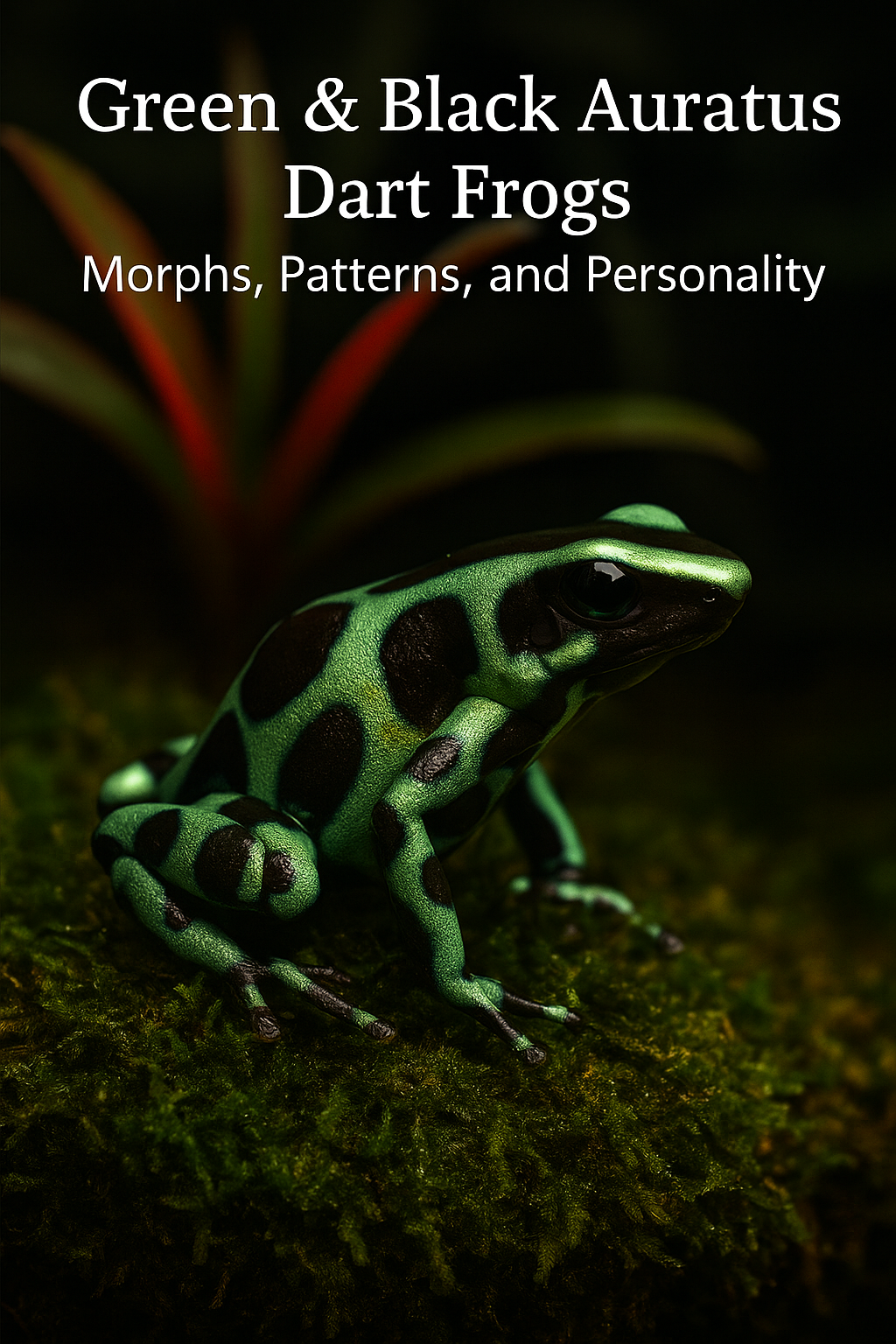Andinobates minutus Dart Frog for Sale UK
Andinobates minutus, often known as the Blue-bellied Poison Dart Frog, is a small yet captivating species from the tropical forests of South America. Renowned for its gleaming black-and-blue colouration and delicate frame, this tiny frog is an incredible showcase of dart frog diversity. Though small, its confidence and bright markings make it a standout addition to any planted vivarium setup. For enthusiasts looking for something both rare and rewarding, Andinobates minutus is a fascinating species to keep and observe.
Origin & Distribution
This species is found throughout the humid rainforests of Colombia, Panama, and Costa Rica. It thrives in lowland and mid-elevation forests, often dwelling among mossy roots and fallen leaves near small streams. The constant humidity and filtered light of these regions create the perfect conditions for these miniature amphibians to flourish.
Size, Lifespan & Appearance
True to its name, Andinobates minutus is among the smallest dart frogs, reaching only 14–18 mm as adults. Their sleek black bodies are often highlighted by vibrant blue or turquoise legs and bellies, giving them their nickname “blue-bellied dart frog.” With proper care, they can live for up to 8–10 years in captivity.
Temperature & Humidity
Maintain daytime temperatures around 22–25 °C, dropping slightly to 20 °C at night. Humidity should remain between 85–100%, with twice-daily misting or an automated system providing constant moisture. These frogs are sensitive to drying out, so consistent hydration and dense planting are key to long-term success.
Vivarium Setup
Andinobates minutus is a terrestrial and leaf-litter dwelling species that benefits from a horizontally oriented enclosure with plenty of cover. A bioactive setup measuring 45 × 45 × 45 cm or larger works well for a pair or small group. Deep leaf litter, moss, and cork bark provide both humidity and security. Add bromeliads and small plants for visual appeal and microfauna support. The 3D Vented Vivarium from Frogfather offers excellent airflow and lighting for this species.
Diet
Despite their size, these frogs are enthusiastic feeders. Offer a mix of fruit flies (both Drosophila melanogaster and hydei), springtails, and micro-crickets. As with all dart frogs, supplementation is essential — use the All-in-One Vitamin & Mineral Dust at every second feeding to maintain healthy growth, skin condition, and breeding potential.
Social Behaviour
Andinobates minutus is best kept as a pair or small group in a large vivarium. Males may display mild territorial behaviour, particularly when calling, but serious aggression is rare. They’re surprisingly confident and visible for such small frogs, often seen foraging among moss and leaves during daylight hours. Their social interactions and delicate calls make them a delight to observe.
Calling & Activity
The male’s call is a soft, high-pitched trill — noticeable but gentle. They are diurnal and most active after misting, when humidity peaks. Their activity and calling behaviour bring a peaceful, rainforest ambience to any living space without being disruptive.
Breeding & Parental Care
Andinobates minutus demonstrates moderate parental care. Females lay small clutches of eggs on smooth leaves or within film canisters, which are guarded by the male until hatching. He then transports the tadpoles individually to small water pools, such as bromeliad axils or leaf cups. Unlike Ranitomeya, the tadpoles are non-obligate egg feeders and can thrive on naturally occurring micro-organisms in these pools. Tadpole development takes approximately 6–8 weeks before metamorphosis.
Visibility & Boldness
Though small, these frogs are remarkably bold and active. They can often be seen climbing low foliage and moving confidently across open areas. Their reflective colouration contrasts beautifully with a planted background, making them a wonderful display species for those who enjoy observing natural behaviours in miniature form.
Availability in the UK
Andinobates minutus dart frogs for sale in the UK are relatively uncommon but occasionally appear through dedicated hobbyist breeders. Frogfather UK collaborates with responsible breeders to make healthy, captive-bred specimens available whenever possible. Their small size, gentle calls, and unique beauty make them an exceptional addition to any advanced dart frog collection.
FAQs
Are Andinobates minutus good for beginners?
They’re better suited for intermediate keepers due to their small size and humidity requirements, but very rewarding once established.
How loud are their calls?
Males produce a quiet, insect-like trill that’s subtle and calming — barely noticeable in most rooms.
Do they need bromeliads to breed?
Bromeliads or small water-holding plants are ideal but not essential — they’ll also use film canisters or leaf cups.
Can Andinobates minutus live in groups?
Yes, small groups can be housed together if the vivarium is spacious and provides enough cover to reduce competition.



